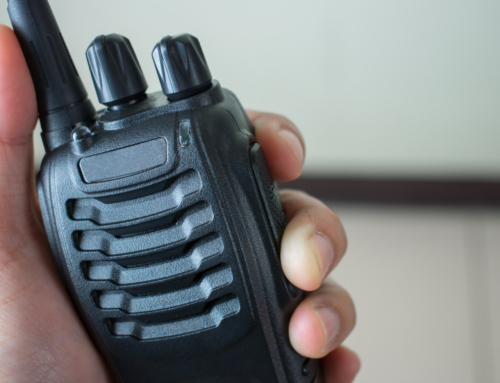Mobile radios are getting more and more common in the workplace these days from schools to firefighting to construction and police.
The one factor they all have in common is these people have information that must be transmitted clearly and accurately.
So, what can you do when your transmission isn’t going through well? One option is to scrap your radios and start over, but that could be time-consuming and costly.
Why not consider a new mobile antenna?
We will show you the benefits of replacing your old radio antennas and how to choose a new one.
Let’s get into it!
1. Why Antennas?
Before we look at how to choose a good antenna, let’s consider why you should replace your current one.
We’ll focus on mobile, vehicle-mounted antennas but we’ll also talk a little bit about portable, handheld radios. Both of these can benefit from a better mobile antenna. People often find that switching to an after-market antenna increases their original range times by 8!
The most important reason people use mobile radios are to increase their range. Several factors can affect a radio’s range such as:
- Radio strength
- Radio frequency
- Area terrain
- Indoor or outdoor mounting
- Antenna
Radio strength is usually measured in watts of power. The higher the wattage, the more power your radio will have. If you have a low power radio, a good antenna can extend your range.
A mobile antenna will generally have between 25-110 watts of power.
There are several different radio bands on both the Very High Frequency (VHF) and Ultra High Frequency (UHF) wavebands. You have to know your frequency and what type of interference you’re competing with. If you have several other groups or networks on your frequency, you may need a stronger mobile antenna.
If you’re in an area with mountains or a city with many tall buildings, your signal may have trouble getting through. This is where a good quality and well-placed antenna can help you.
You also want to consider the amount of distance you need. If you’re trying to cover a large area with your radio, a strong mobile antenna is a must to make sure you’re reaching all the places you need to.
Most mobile antennas are mounted inside or outside a vehicle. You want to consider the interference your vehicle may be creating. Sometimes, moving your antenna to an outside location can help, especially in a vehicle.
Finally, the type of mobile antenna you choose will affect your radio range. Out of all the options just listed, an antenna change is usually the cheapest and easiest way to improve your transmission.
2. Design of a Mobile Radio
In most mobile radios, the transmitter is connected to a feed line, which connects to an antenna. When a person speaks into the transmitter, the electrical signal travels down the feed line and out the antenna. Pretty simple, right?
Before we talk more about the specifics of this process, let’s look at some terminology.
Impedance refers to how much resistance the cable lining has to electrical flow.
Ohm is the measurement of a cable’s impedance. The lower the number, the lower the impedance.
SWR stands for standing wave ratio. This is the calculation of your transmission’s ohm divided by your cable’s ohm.
Now back to the process of radio transmission.
If the ohm of your transmitter and antenna do not match your SWR, energy may ricochet back and forth through the cable. This can lower the broadcast of your signal.
Ideally, you want your SWR to be 1:1, meaning a 50-ohm transmitter connected to a 50-ohm antenna. This cannot always be possible though, especially if you don’t want to replace your whole radio.
For example, if you have a standard 50-ohm port on your transmitter and you purchase a10-ohm antenna, your SWR is now 5:1. This can cause a quieter transmission because part of the signal is being trapped in the cable.
That being said, you can purchase antenna transformers that allow a low ohm antenna to match a higher ohm transmitter. These can cut you SWR in half, making your signal a lot stronger.
This issue is most important when you’re replacing a vehicle’s mobile radio antenna, but it still applies for smaller handheld models as well.
3. Mobile Antenna & Handheld Antenna Differences
Obviously, the main difference between mobile and handheld antennas is that one is mounted to a vehicle and the other is portable.
The other difference is typically the length of the antenna. Handhelds range from 2-20 inches, while mobile antennas range from 2 inches to 8 feet.
These are the different types of handheld antennas.
- Whip: These measure about 7-8 inches and have great range.
- Stubby: These measure 3-4 inches. They are easy to transport but cannot transmit as far as other antennas.
- Heliflex of Helical: These antennas have different lengths but are thicker than other antennas, which increases their range.
If you’re radio is using a VHF band and you carry your radio on your belt, do not use a stubby antenna. These antennas cannot transmit well on a VHF frequency when they’re attached to a body.
When you’re changing your antenna, you need to make sure you use the correct decibel measurements.
Mobile antennas can be measured in dBi or dBd units. If you’re converting between the two, subtract the 2.15 from the dBi to find the equivalent dBd. For example, a 4.0 dBi is equal to a 1.85 dBd.
A general rule of thumb for choosing a new antenna is the bigger, the better. Of course, you want to make sure all the antennas you’re eyeing are compatible with your specific radio, but the longest one possible will most likely be the best for increasing your range.
You should also consider the distance most antennas reach.
75 ohm antennas/cables are commonly found in your home attached to small appliances or audio equipment. They can transmit around 5,000 square feet.
50 ohm antennas/cables are primarily used for data transmission and significantly increase the reach of radio signals. These cables can transmit 7,500 to 100,000 square feet.
Choosing Your Mobile Antenna
Now that you know the benefits of replacing your antenna and a few things to look for when choosing one, it’s time to start hunting! Take a look at a few of these great antenna options!






Leave A Comment
You must be logged in to post a comment.